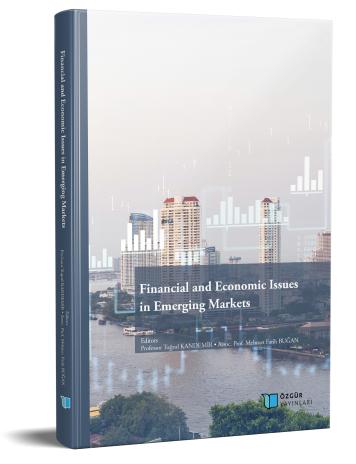
E7 Ülkelerinde Döviz Kuru ile Borsa Getirileri Arasındaki İlişki
Şu kitabın bölümü:
Kandemir,
T.
&
Buğan,
M.
F.
(eds.)
2022.
Gelişmekte Olan Piyasalarda Ekonomik ve Finansal Konular.
Özet
Bu çalışmada, E7 ülkelerinde döviz kurları ile piyasa endeksleri arasında ilişki olup olmadığı incelenmiştir. Bilindiği üzere ülkeler gelişmişlik düzeyi ve ekonomik durumlarına göre: en az gelişmiş ülkeler, az gelişmiş ülkeler, gelişmekte olan ülkeler ve gelişmiş ülkeler gibi isimlerle sınıflandırılmaktadır. Bu araştırmada kullanılan, literatüre E7 (Emerging 7) olarak giren ülkeler ise gelişmişlik düzeyleri ve ekonomileri incelendiğinde gelişmekte olan ülkeler arasında yer almakta olup gelişmekte olan ülkeler arasında en iyi ekonomiye sahip ülkelerdir. Bu ülkeler: Hindistan, Endonezya, Çin, Türkiye, Brezilya, Rusya ve Meksika’dır. 01.01.2010- 28.02.2021 dönemi haftalık verilerin kullanıldığı araştırmada; döviz kuru olarak ülkelerin ABD Doları kuru ve ülkelerin en çok işlem hacmine sahip piyasa endeksleri kullanılmıştır. Bu ülkelerde döviz kurları ile piyasa endeksleri arasındaki ilişkiyi ortaya koymak amacıyla VAR (Vector Autoregressive Model) analizi, Granger nedensellik analizi ve etki tepki analizi ve uygulanmıştır. Analizlerden elde edilen sonuçlar, Brezilya ve Hindistan dışında kalan diğer ülkelerde döviz kuru ile pay senedi piyasası arasında ilişki olduğunu, genel olarak Meksika’ da döviz kurundan pay senedi piyasasına nedeni olduğunu gösterirken diğer ülkelerde (Çin, Rusya Türkiye ve Endonezya) pay senedi piyasasından döviz kurlarına doğru nedenselliğin olduğu anlaşılmıştır.

